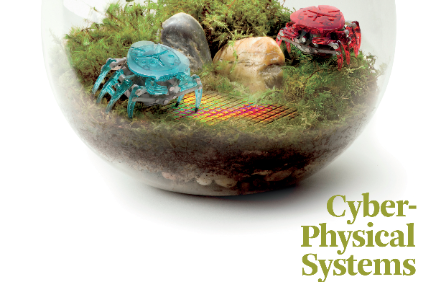COLUMN: Letter from the editors
FREE CONTENT FEATURE
Enriching your network via diversity
By Inbal Talgam-Cohen

Computing in the new century is no longer confined to the desk, behind a monitor. It is wireless, ubiquitous, and on the go. It has taken to the skies, the oceans, and the land all around us. These cyber-physical systems are co-habitants of a complex and advanced ecology we have built for ourselves. Cyber-physical systems are electro-mechanical systems, which harness the power of computation, communication, control, and coordination to accomplish their assigned task(s) efficiently.
In this issue, we present the concept, applications, challenges, and progress of ubiquitous computing; the technologies that make computing infiltrate into every aspect of our daily lives; and the machines and systems that reshape the air, water, and land on earth.
By Inbal Talgam-Cohen
The XRDS blog highlights a range of topics from security and privacy to neuroscience. Selected blog posts, edited for print, will be featured in every issue. Please visit xrds.acm.org/blog to read each post in its entirety.
By Samira Daruki
By Vassilios Karakoidas
Unmanned aircraft systems. Aerial robots. Drones. Regardless of the name, this new technology is being developed to revolutionize the sampling and understanding of complex atmospheric phenomena.
By Eric Frew
The fusion of next generation sensors and advanced information systems, combined with advances in unmanned aircraft systems that have emerged through aerospace engineering technologies, will contribute to the challenge of feeding our future world in a sustainable manner. Without these advances, the world may find itself short of food and perhaps on the brink of global conflict.
By Wayne Woldt, Eric Frew, George Meyer
The use of unmanned aerial drones will revolutionize news reporting, but many issues need to be resolved before things can really take off.
By Matt Waite
Oceans cover a majority of our planet and are currently lacking in regards to exploration and technological innovations. One technology that can help enable more aquatic applications is underwater acoustic networks (UANs). This article discusses the current status of UANs, the new applications that can be provided, and the challenges faced by this technology.
By Michael Zuba
Crabster CR200 is a giant crab robot with six legs and 30 powerful joints developed at the Korea Research Institute of Ships and Ocean Engineering. The robot can help explore ancient shipwrecks in areas of harsh tidal currents and turbid water, where traditional underwater vehicles have trouble operating.
By Bong-Huan Jun, Hyungwon Shim
Combining advanced technologies in real-time wireless communication, control theory, sensor and actuator design, and rehabilitation science.
By Wenlong Zhang, Yi-Hung Wei, Quan Leng, Song Han
A cyber-physical systems perspective on the design of vehicular networking solutions for safer and greener transportation.
By Yaser P. Fallah
In the future, our radio devices will adapt to deal with new types of signals. The challenge is to describe those signals so that devices can learn from one another and communicate.
By Aveek Dutta, Dola Saha
By Adrian Scoică